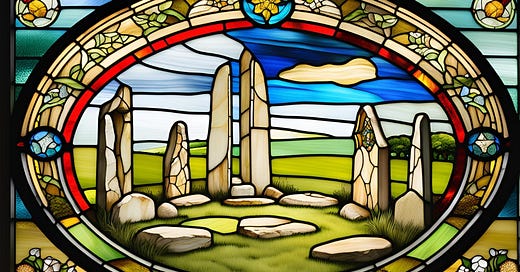Stone circles. They dot the landscape, silent witnesses to millennia of human history. But these enigmatic structures are more than just piles of rock; they're vessels of stories, myths, and legends passed down through generations. They ignite our imaginations, prompting us to ask: who built them, and what secrets do they hold? Let's delve into the fascinating folklore of stone circles, where myth and reality intertwine.
From Dancers to Kings: Tales Etched in Stone
One recurring theme in stone circle folklore is the tale of petrified dancers. Imagine men and women, perhaps celebrating a pagan ritual or simply reveling at the wrong time (often the Sabbath), suddenly frozen in stone. These stories often serve as moral warnings, highlighting the consequences of defying social norms or disrespecting sacred times. Sometimes, the transformation is attributed to a witch's curse, a warlock's wrath, or even the devil himself.
But the stories aren't just about women. Hubris, or excessive pride, can also lead to a man's downfall. Take the legend of the King's Stone, part of the Rollright Stones. A king, consumed by his desire for more land, is challenged by a woman. If he can walk seven steps and still see the village, he can claim all the land within his sight. His overconfidence seals his fate, turning him and his men to stone.
Witches, Cows, and Grumpy Guardians
Witches are another common fixture in stone circle lore. Sometimes they are benevolent figures, but often they are depicted as grumpy or mischievous. One humorous tale tells of a witch at Mitchell's Fold, who, envious of the villagers' abundant milk supply from a magical cow, attempts to sabotage them. She milks the cow into a sieve, a futile act that underscores her spite and ultimately fails to harm the magical source of the milk. This theme of magical cows and their endless bounty appears in various mythologies, from Norse legends to Irish tales, highlighting the importance of these animals in ancient societies.
Games, Rituals, and Unseen Energies
The ancient game of hurling is also connected to stone circles, particularly the Hurlers in Cornwall. Legend has it that men playing hurling on a Sunday, ignoring the priest's warnings, were transformed into the stones as punishment for their transgression. This story, like many others, blends elements of morality, folklore, and the natural world.
Beyond the specific stories, stone circles are often associated with unseen energies, spiritual vibrations, and even portals to other realms. These beliefs, while not always explicitly part of traditional folklore, contribute to the enduring mystery and fascination surrounding these sites. They speak to our ongoing desire to connect with the past and explore the unknown.
The Enduring Power of Story
These stories, many originating in the Middle Ages, reflect a time when people sought to explain the presence of these mysterious structures. They are a testament to the power of storytelling, weaving together elements of morality, folklore, and the natural world. As we continue to explore and study stone circles, we not only learn about the past but also gain insights into the human imagination and our enduring connection to the landscape.
Have you heard any other fascinating stories about stone circles? Share them in the comments below!
For more on Stone Circles check out episode 18 of the Wyrd Wessex Podcast here
Or watch on Youtube here



